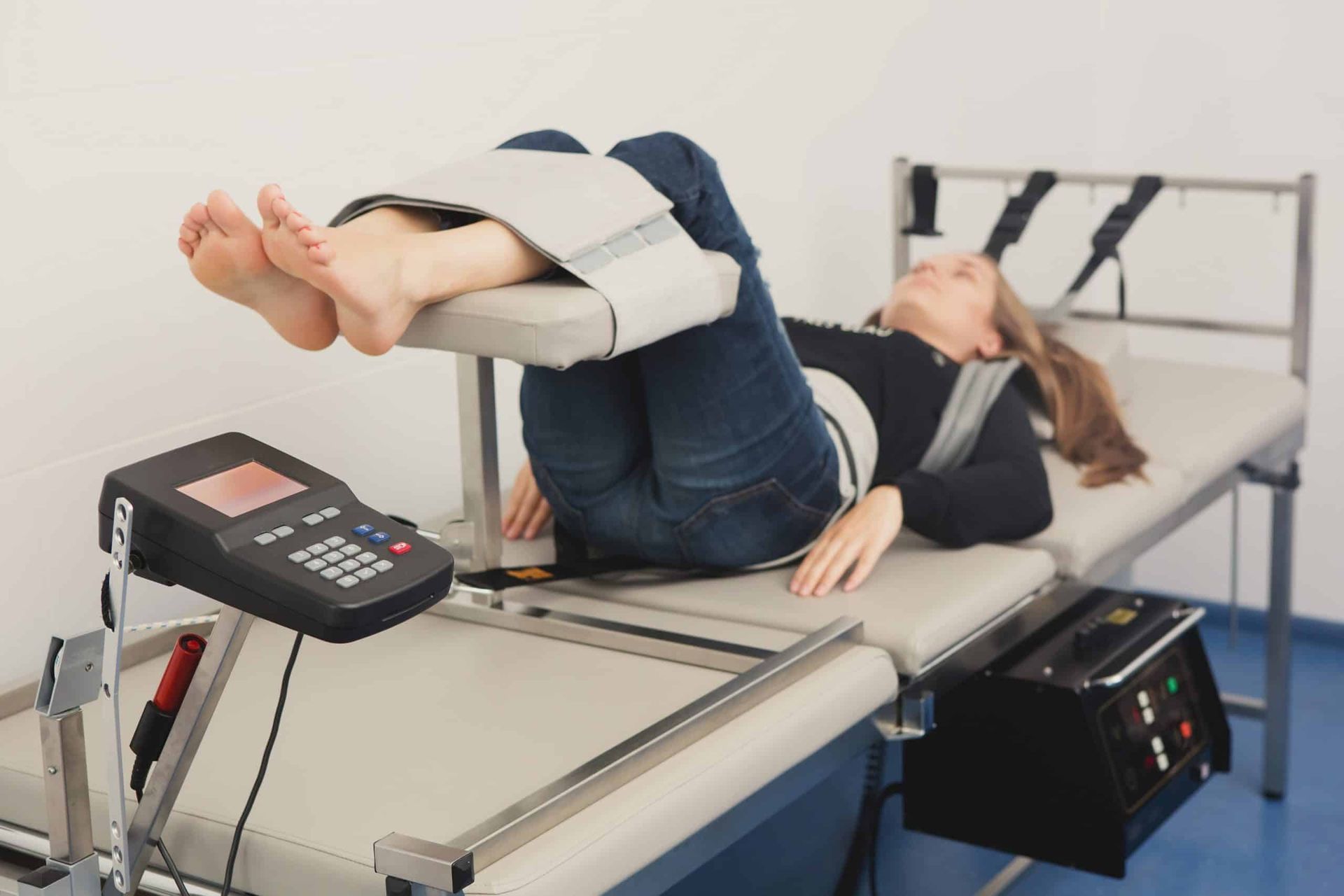Are Your Knees or Hips Causing Pain (Chiropractic Care Can Help)
- By Philip Kogler
- •
- 16 Aug, 2022
- •
Chiropractic care can help manage joint-related pain and improve your overall neuromusculoskeletal health.

Your joints are vital to how your body moves. They aid in walking, running and how you go about your daily tasks. However, many people suffer from joint pain and this affects how they get around and keep up with busy lifestyles. Most joint pains are related to the knee, shoulders, spine and ankles. Keeping the joints healthy is necessary for maintaining one’s free range of motion.
All kinds of acute injuries can cause discomfort and joint pain. Many of these injuries experienced by adults are related to automobile accidents, workplace injuries and traumatic events. Injuries tend to be milder (and are a result of repetitive stress) for people who work in a traditional office setting. In contrast, the injuries for people working in hazardous conditions may be a result of uneven flooring, spilled materials, malfunctioning equipment and other types of mishaps. When these types of injuries happen, it mostly affects the elbow, knees and shoulders. Luckily, the symptoms of these injuries can be reduced with chiropractic adjustments.
Joint injury to adolescents and adults is usually a result of participating in different types of sports. Chiropractic care is a great treatment option for the rehabilitation process of most sports injuries for both amateurs and professionals. Once the pain and harm to the body have been medically addressed, chiropractic care can help restore the joints to proper health.
What are some more common benefits of chiropractic care?
- Improves neck pain.
- Reduces reliance on opioid pain relievers.
- Eases back pain.
- Possible reduction of osteoarthritis symptoms.
- Eases headache symptoms.
- More affordable treatment for chronic back pain.
- High satisfaction.
- Reduces scoliosis symptoms.
At least 70 million adults in the United States deal with some type of chronic pain. In fact, low back pain is the second most common reason Americans see their doctor.
Many people are interested in finding alternatives to medication for pain relief. Chiropractic treatment is one potential pain management option, especially if you’re dealing with back pain or neck pain.

Patients who suffer from the chronic pain associated with bulging, degenerating, or herniated discs may benefit from treatment using a spinal decompression table. This type of pain, which can manifest as back or neck pain itself as well as associated pain in the arms and legs, may have already been treated by traditional traction methods or even by spinal surgery to limited improvement. In these cases, a spinal decompression table that uses computerized sensors to perform stretching actions on the spine and promote healing can be uniquely effective.
But what is a spinal decompression table, and how it can be used to treat patients who have not been able to find relief in other ways?

The spine is designed to carry the body's weight and distribute the loads encountered during rest and activity. When excess weight is carried, the spine is forced to assimilate the burden, which may lead to structural compromise and damage (eg, injury, sciatica). One region of the spine that is most vulnerable to the effects of obesity is the low back—the lumbar spine.
Why Exercise is Important
Lack of exercise can lead to poor flexibility and weak muscles in the back, pelvis, and thighs. This can increase the curve of the lower back, causing the pelvis to tilt too far forward. Further, this is detrimental to proper posture and as posture weakens, other regions of the spine (neck) may become painful.
Back Pain Only Age-related?
You may try to dismiss the cause of some of these spinal disorders to the process of normal aging. It is true that with age, body tissues can cause changes to spinal anatomy. However, if you are overweight or obese, chances are you have, or will have, back pain. You may have or develop one of the following conditions:
Posture: Unhealthy posture accounts for neck and back pain. A level of physical fitness is necessary to properly support the spine. One of the most commonly known side effects of poor posture is unwanted strain on your upper and lower back. Slouching forward puts pressure between your shoulder blades and causes you to flatten your back muscles.
Low Back Pain: Obesity may aggravate an existing low back problem and contribute to recurrence of the condition.
Osteoporosis: A sedentary lifestyle coupled with an unbalanced diet can affect the density, or strength of the bones (spinal vertebrae). When the structural architecture of a vertebral body is compromised, it is at risk for fracture. Vertebral fractures can be painful and disabling. If you have been diagnosed with osteoporosis, you have probably lost between 25% to 30% of desirable bone density.
Osteoarthritis (OA) and Rheumatoid Arthritis (RA): The joints in the spine are called facet joints. Excessive body weight places unnatural pressure and stress on the joints during movement and at rest.

Whiplash is a neck injury commonly associated with rear-end car accidents. It happens when someone experiences a forceful overextension of the neck beyond its typical range of motion. The movement is rapid, like a whip .
Whiplash may be an invisible injury, but that’s not to say it isn’t serious; the aftereffects can linger for months and even years to some degree of chronic pain. Even mild cases can result in debilitating discomfort and impact daily life as an injury nearly impossible to ignore.
Quick Facts about Whiplash
The Spine Research institute of San Diego provides the following statistics:
- About 3 million Americans sustain whiplash injuries each year
- About 1.5 million Americans suffer chronic pain from whiplash
- About 300,000 of Americans become disabled due to the pain of whiplash
- Most whiplash injuries occur at crash speeds below 12 miles per hour
- There is no correlation between vehicle damage and extent of injury
- Aging significantly increases the risk of whiplash; children have 2/3 the risk of adults
Common Whiplash Symptoms
Some of the most common symptoms of whiplash include:
- Neck pain.
The pain could range anywhere from mild to severe. It might be located in one spot or general area, or it could also radiate down the shoulder into the arm and/or hand. Typically, neck pain from whiplash is caused by ligament sprains or muscle strains, but it can also be caused by injuries to discs, nerves, joints, and/or bones.
- Neck stiffness or reduced range of motion.
Reduced neck mobility could be from pain, tightening of a muscle, or a mechanical problem, such as with a joint.
- Headache.
A neck muscle tightening, or a nerve or joint of the cervical spine becoming irritated could cause headaches.
- Neck instability.
This whiplash symptom commonly results from stretched or torn soft tissues, such as ligaments. Although, it could also be caused by a fracture.
- Shoulder and/or upper back pain.
If the neck’s soft tissues, such as muscles or ligaments, are torn or strained during whiplash, then sometimes that pain can also be referred to other soft tissues in the upper back and shoulders.
- Radiating tingling, weakness, or numbness.
Sometimes whiplash can cause one of the neck’s spinal nerve roots to become compressed or inflamed, which can lead to cervical radiculopathy symptoms
of tingling, weakness, and/or numbness radiating down the shoulder, arm, hand, and/or fingers. Typically, cervical radiculopathy
is only felt on one side of the body, but in rare cases it can be felt on both sides if more than one nerve root is affected.
Anywhere from just one whiplash symptom all the way up to numerous symptoms can present at once. Symptoms can also come and go at various times.
Other Whiplash Symptoms and Associated Disorders
Other whiplash-associated disorders can include:
- Dizziness.
Whiplash-related dizziness could be from neck instability or even a concussion (mild traumatic brain injury).
- Vision problems.
Blurry vision or other visual deficits could result from any number of causes, including concussion or damage to a nerve. A vision problem could also contribute to dizziness.
- Emotional changes.
A person might become more irritable, anxious, or even depressed. It can be hard to know if these changes are due to a concussion, post-traumatic stress syndrome, pain from the neck injury, or stress from the accident’s aftermath which could include litigation, financial worries, and/or the involvement of loved ones who were also injured.
- Ringing in ears.
Also called tinnitus, this ringing or buzzing in one or both ears can range from intermittent and minor to constant and highly distracting. Any number of problems from whiplash could lead to tinnitus, such as an injury to the part of the brain that controls hearing, nerve or vascular damage, jaw injury, or even stress.
- Trouble getting good sleep.
A person might find it difficult to fall asleep or stay asleep. These problems with sleeping well and waking refreshed could be due to various whiplash-related factors, such as pain, stress, or concussion.
- Fatigue.
Lack of energy could be related to difficulty sleeping, depression, stress, pain, concussion, or various other causes.
- Memory and/or concentration problems.
It’s possible for someone to develop cognitive symptoms after a whiplash injury. These troubles could involve difficulty with memory or thinking. Sometimes these symptoms start shortly after the injury, or they might not show up until hours or days later. Cognitive problems could be from a brain injury, or perhaps they could be related to various types of stress.
- Challenges with chewing, swallowing, or speaking.
Sometimes trauma to muscles around the jaw can cause chewing or yawning to be painful.
- Difficulty swallowing.
Injury to the larynx or esophagus could make swallowing painful or more difficult.
Sometimes whiplash symptoms persist or get worse with time, and finding their root causes often proves elusive.


